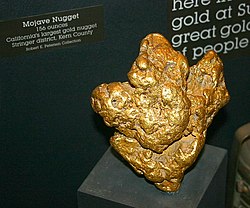Metal detector
A metal detector is a tool a person can use to help find metal nearby. It is useful for finding metal within other objects, or for finding metal underground. Most metal detectors will make a sound or have a needle move on a sensor in order to show where objects are. This tells how close you are to an object - for example, by making a higher-pitched sound when you are closer to an object.
History of the metal detector
Alexander Graham Bell invented a kind of metal detector in 1881 when he was trying to find the bullet in President James Garfield's body after he had been shot. The metal detector worked but it was confused between the bullet and a coiled bed-spring on which the President lay.
Gerhard Fischer made a better version in the 1920s but the detector got confused when someone was approaching ore-bearing rocks. He was given a patent in 1925. A businessman named Shirl Herr had earlier tried to get a patent for a metal detector but was not given one until 1928.
Uses
A metal detector can be used by archaeologists for finding things like metallic coins, bullets, and jewellery underneath or inside a surface.
Metal Detector Media
An early metal detector, in 1919, used to find un-exploded bombs in France after World War I
A man metal detecting on a beach in Japan, 2016
This 156-troy-ounce (4.9 kg) gold nugget, known as the Mojave Nugget, was found by an individual prospector in the Southern California Desert using a metal detector.
Metal detectors at Berlin Schönefeld Airport



